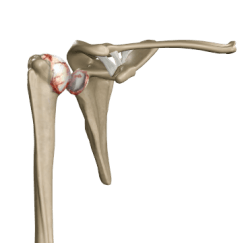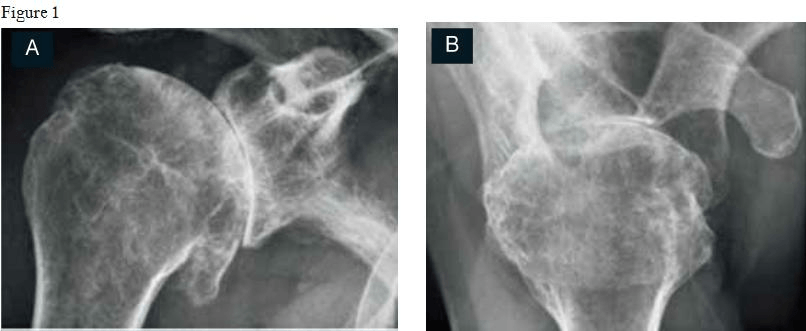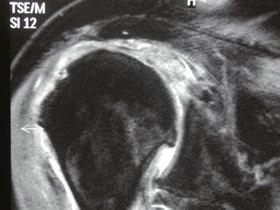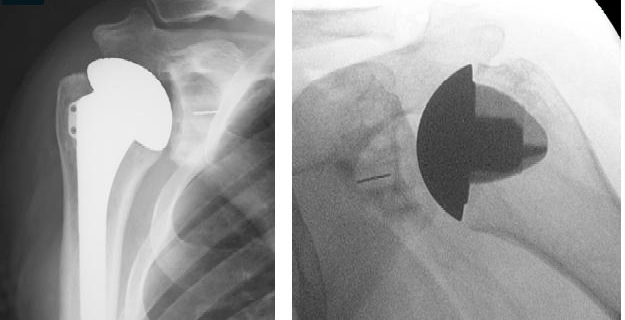Shoulder Arthritis
Shoulder Arthritis
The term arthritis means inflammation of a joint.
Shoulder arthritis covers numerous conditions where the joint surfaces (cartilage) wear out.
The joint surface is covered by a smooth articular surface that allows pain-free movement in the joint.
The cartilage cushions the bones that make up a joint in order to absorb stress during movement.
Who Does Shoulder Arthritis Affect?
- Common in older people, usually over age 50
- Younger people can develop arthritis as a result of shoulder trauma or other injuries.
How Does Shoulder Arthritis Affect Your Body? (if required)
- Decreased mobility and physical weakness
- General Tiredness
- Difficulty sleeping
- Exhaustion
What Causes Shoulder Arthritis?
Damage of the cartilage in the shoulder joint can cause shoulder arthritis.
When the cartilage is damaged, the raw bones begin to painfully rub against each leading to inflammation. The proportion of cartilage damage inflammation varies with the type and stage of arthritis
Other causes includes
- Trauma (fracture)
- Increased stress, e.g., overuse, overweight.
- Avascular necrosis (loss of blood supply)
- Infection
- Growth abnormalities of the shoulder
- Connective tissue disorders
Types of Shoulder Arthritis
The most common types of arthritis are:
Osteoarthritis:
Osteoarthritis, also called wear-and-tear arthritis, is a degenerative joint disease that affects the cartilage. The cartilage starts to wear away over time, and in extreme cases, nothing remains to protect the bones, causing painful bone-on-bone contact. Osteoarthritis is the most common type of arthritis, which often occurs with advanced age, excessive strain, or another disease, injury or deformity.
Cuff Tear Arthropathy
Chronic large tears of the rotator cuff can cause the shoulder ball to ride high on the socket and rub on the overhanging shoulder blade. This can lead to cartilage wear and painful arthritis characterised by weak, decreased movement.
Rheumatoid Arthritis
This is an auto-immune disease in which the body's immune system attacks healthy joints. Occurring most often in women of childbearing age (15 to 44 years), this disease inflames the lining of joints (synovium). Rheumatoid arthritis mostly affects joints of the hands and feet and tends to be symmetrical (affects the same joints on both sides of the body). With the advance effect of modern medical treatments, the rheumatoid disease is better controlled, limiting joint destruction and the need for replacement.
Symptoms of Shoulder Arthritis
Each form of arthritis affects the shoulder differently, with general symptoms including swelling and pain or tenderness for more than two weeks, redness or heat, limitation of motion and early morning stiffness. When severe, arthritis can deform or cause disability in the shoulder joint.
In an arthritic shoulder:
- The capsule is swollen.
- The joint space is narrowed and irregular in outline.
- Bone spurs or excessive bone can also build up around the edges of the joint.
What are the Stages or Progression of Shoulder Arthritis
Shoulder arthritis usually progresses in stages.
- Stage A - the cartilage softens
- Stage B - the cartilage develops surface cracks
- Stage C - the cartilage begins to fibrillate ( deteriorate and flake)
- Stage D - the cartilage wears away to expose the bone's surface
How is Shoulder Arthritis Diagnosed
Your doctor needs to diagnose your shoulder arthritis. This is done by:
- Taking a medical history,
- Performing a physical examination
- Reviewing imaging of the affected region. These may include may
- X-rays
- Computed tomography (CT) scans
- Magnetic resonance imaging (MRI) scans
Non Surgical Treatment for Shoulder Arthritis
There is no cure for arthritis, but the symptoms can be managed.
your doctor may:
- Prescribe pain and anti-inflammatory medicine,
- Advise ice application on the affected region, rest
- Refer to occupational therapy or physiotherapy, for pain management, stretches and exercises and heat treatment
Pain reduction could be also achieved by your doctor organising administering an image-guided steroid injection directly into your joint.
Surgical Treatment for Shoulder Arthritis
In severe cases, surgery may be suggested. Common surgeries for treatment of shoulder arthritis include:
- Arthroscopy (using narrow instruments and small incisions to clean out the damaged tissue)
- Arthroplasty
(replacement of the damaged joint with artificial components)
What if Shoulder Arthritis goes Untreated?
For sufferers of shoulder arthritis or damaged shoulders, if untreated normal movement may become increasingly limited. More often, however, the Progression of pain can become debilitating and may be difficult to control with analgesics. Eventually, the pain and stiffness can restrict activities of daily living, sleep and independence, compromising the quality of life.











